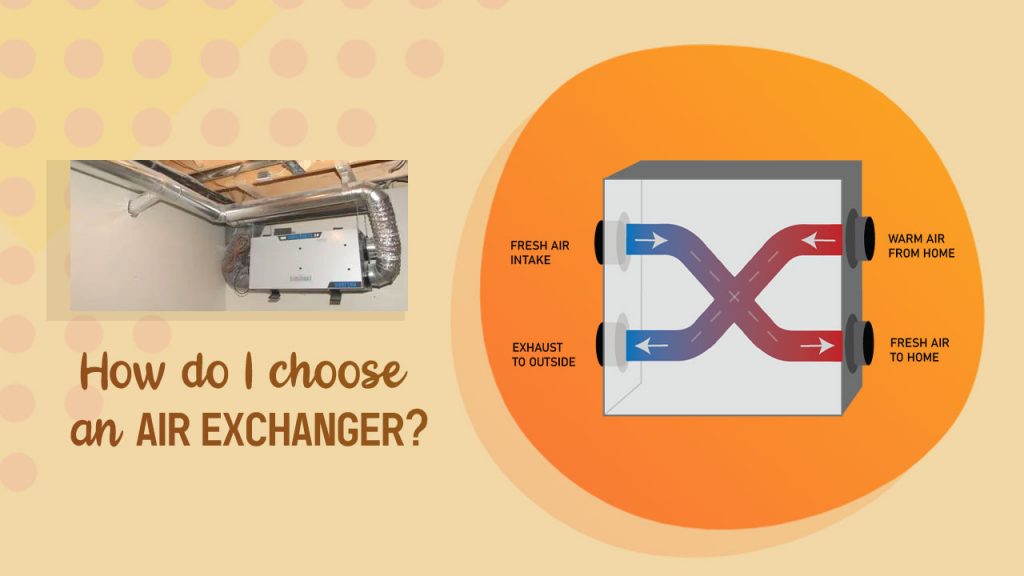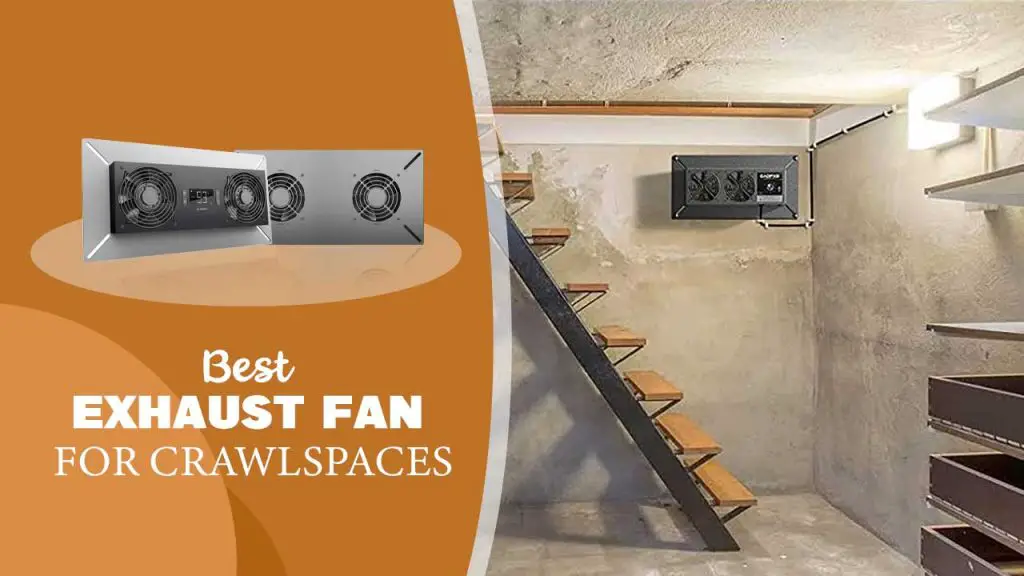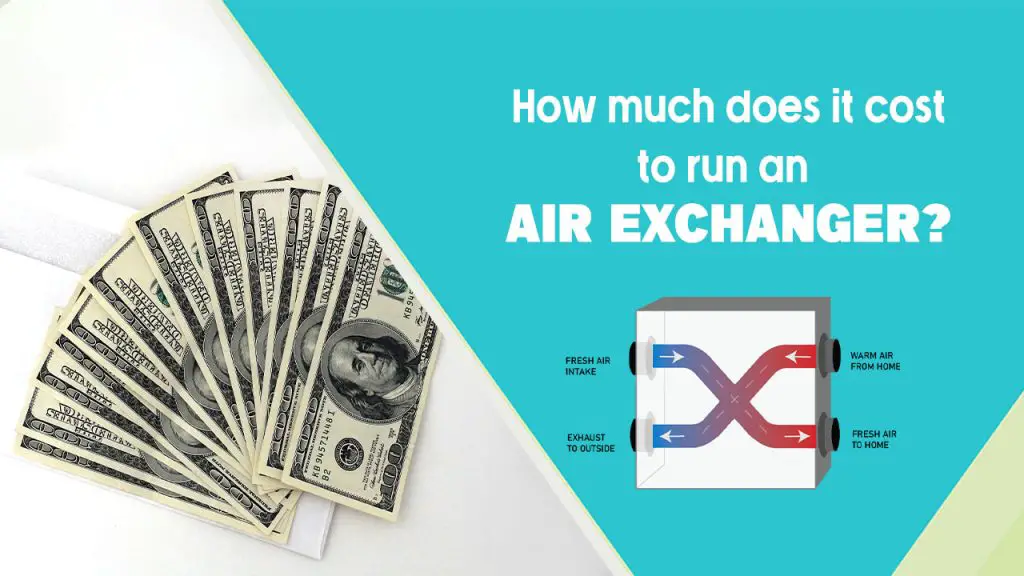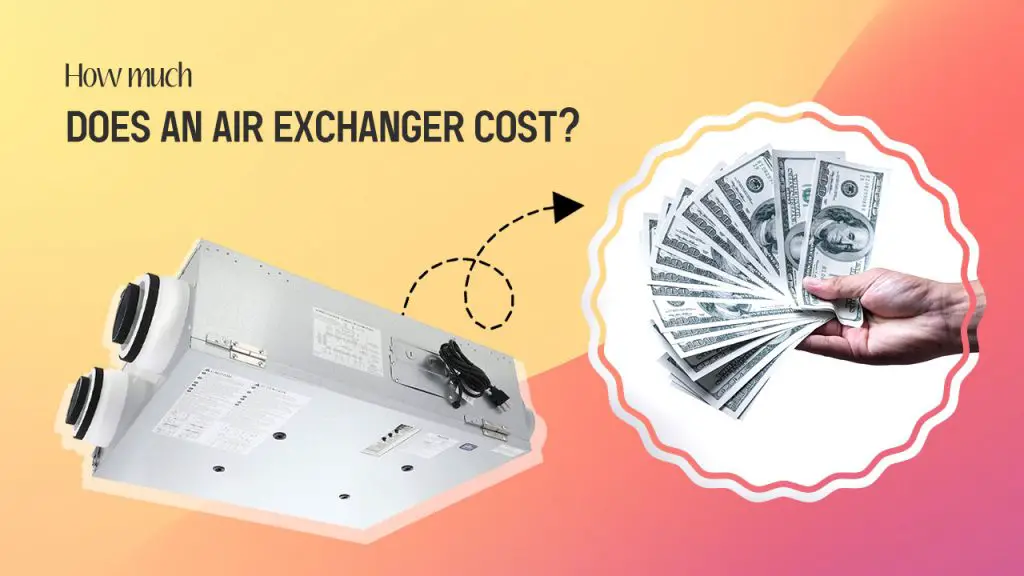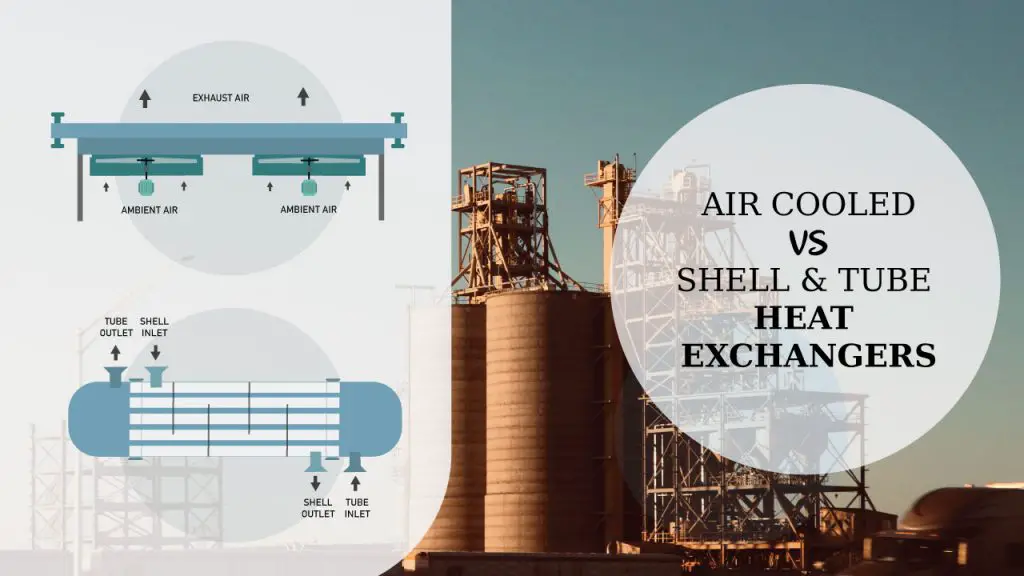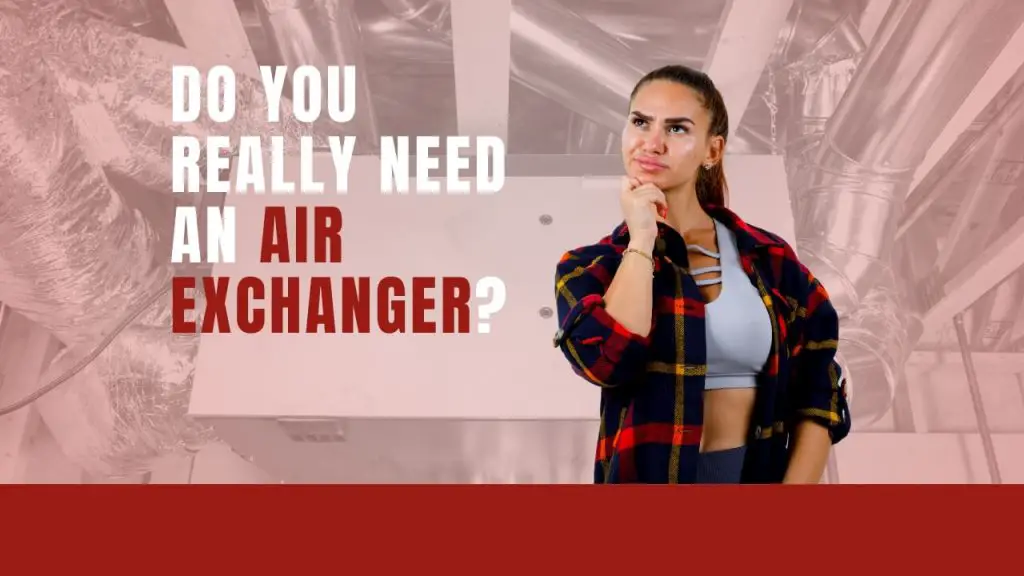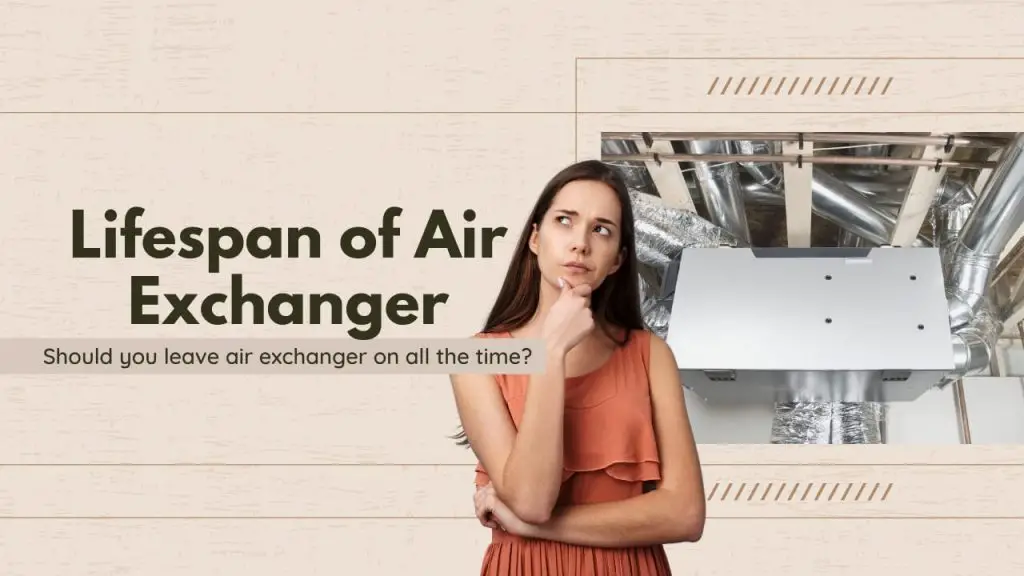If you’ve just moved to a new city or you live in a recently-built house, chances are that your home is airtight. This recent home design does not allow air to leave your building and may also cause the build-up of excess humidity.
Human activity may also cause the spread of polluted matter in your building. With an air exchanger, you’ll be able to remove such polluted, excessively humid air and replace it with cleaner, fresher air. But not all air exchangers are suitable for all buildings or homes.
Choosing an air exchanger that suits your needs is a very important process and you must take care not to get it wrong. If you’re reading this, you’re already one step towards getting the right unit.
We’ll show you all the factors you need to consider before choosing an air exchanger, including the type, size and capacity, etc. Let’s get right into it.
What Type of Air Exchanger Do I Need?
Understanding your specific needs will help you decide the exact type of air exchanger you need.
There are three main types of Air Exchangers
- Standard Air Exchangers
- Energy Recovery Ventilators (ERVs)
- Heat Recovery Ventilators (HRVs)
1. Standard Air Exchangers

A standard air exchanger is pretty much what the name suggests. It exchanges indoor air with outdoor air; removing pollutants, excess humidity and bad odors in the process.
It is also known to prevent condensation problems which tend to affect window ledges.
If you want an effective air exchanger that does the above, without necessarily tampering with indoor or outdoor heat, this is what you need. It is more or less a whole-house purifier and ventilator.
2. Energy Recovery Ventilators (ERVs)

These are also called energy recovery air exchangers because of how they work. They are pretty complicated too.
Asides from exchanging the air and introducing fresher, cleaner air into the building, the energy recovery ventilator also recovers heat and much of the humidity in order to maintain an acceptable temperature and humidity level in the building.
Due to this added function, the device often acts as a pseudo heat pump for many, both in summer and winter. It also helps you save money on energy and heat bills.
This model is best during winter and in very dry regions when outdoor air is expectedly drier than indoor air. You’d need to preserve some of that indoor humidity to avoid irritations like asthma and other lung infections.
Furthermore, you’ll be able to retain some of the indoor heat when you have relatively cooler outdoor weather; like during winter.
3. Heat Recovery Ventilators (HRVs)

This group of air exchangers has a heat recovery core as an added feature, despite having pretty much the same features as the standard air exchanger.
It is, perhaps, the most popular of all the three types. Its core is usually made of polypropylene and aluminum, allowing the unit to recover the heat from the expelled air and introduce it to the incoming air.
With this device, you benefit a lot by enjoying fresher, dehumidified air, while cutting down your heating bills.
This is best if you need something that preserves the heat in your building, rather than allowing your heaters to overwork and piles up energy bills. If you live in a pretty cold region, this is also a great supplement for your heating system.
What Size Air Exchanger Do I Need?
Air exchangers come in different sizes and capacities and you must choose the one that suits your needs.
The most important factors when it comes to size are the number of rooms and number of persons in your building because the performance is measured by how many bodies live in the building and their activities.
This is what determines the level of humidity and pollution and, hence, the air quality. The actual size of the building only comes into play if you need to determine what airflow capacity you require.
In other words, if you have a 3 bedroom apartment with 4 people (which is the standard), any of the models should do after you have considered the other factors.
However, if you have upwards of 6 people in the equivalent of a 3-bedroom apartment, you’re bound to have more humidity, so a standard air exchanger should do.
If there are less than 3 people in the same home, you should expect the air to be dry, and an ERV is more appropriate here.
Another way to arrive at size is to look out for the airflow rate of the unit (measured in Cubic Feet per minute). You should also know the area of the house to calculate it.
If you have a 3-bedroom house measured at 1,500 sq. ft and occupied by 4 persons, the unit’s CFM can help determine if it’s suitable or not.
For instance, a typical bedroom requires 5-6 air changes per hour, while a family living room requires 6-8 air changes every hour.
Kitchens are slightly higher at 7-8 air changes per hour. As for smoking rooms and bars, you’d need a device that can perform between 15 and 20 air changes per hour.
The formula is to multiply the CFM by 60 minutes (which gives an hour) and divide the result by the room’s area or square footage. If your device has a tag that says 400 CFM, we can calculate thus;
400 CFM x 60 ÷ 1,500
24,000/1,500 = 16
A 400 CFM unit is very suitable for a 1,500 square foot building, even if smoking is done in the house, as it can carry our 16 air exchanges every hour.
On the other hand, if you’re considering a 300 CFM unit and your house has an area of 2,500 sq. ft, you can calculate using the same formula;
300 CFM x 60 ÷ 2,500
18,000/2,500 = 7.2
This means a 300 CFM unit will perform 7.2 air exchanges per hour in a 2,500 sq ft building. This is also quite suitable if it’s a residential home where smoking is not done.
Other Key Factors to Consider While Choosing an Air Exchanger
Besides considering the size and type of air exchanger you need, there are some other key factors you must consider to get the best out of your unit. These include;
1. Design
The first thing to consider about the unit’s design is what material is used for the core. The core is more or less a number of plates stacked horizontally or vertically.
The best core has thermal conductivity, noise absorption, resistance to corrosion, as well as low weight. While aluminum plates are popular for their thermal conductivity, corrosion occurred especially in damp areas and it didn’t do so well with the sound.
Plastics will solve the issue of corrosion and weight, but they aren’t conducive and are more expensive. If you do find modern high-tech heat exchangers that use composite materials, that’s what you should go for.
2. Advanced Features
You should also look out for defrost controls to prevent condensation and freezing around the core. An insulated container is also very important in order to reduce the formation of condensation and increase efficiency.
It is best if the defrost mechanism has a sensor to keep it alert and prevent such condensation before it even begins.
3. Reusable filter
Purchasing an air exchanger with a reusable filter means you don’t have to bother about replacing the filter every 3 months. A reusable filter can be cleaned and reused multiple times and this can save you a lot of money.
4. Available Space
Before you purchase an air exchanger, be sure of its physical area and size. You must consider what space you have available in your home or building and be sure the unit you’re getting will fit.
Furthermore, less bulky units are easier to install and move (when necessary). It’ll be a lot easier to get a smaller, lighter unit with optimum performance and efficiency.
Final Words:
Air exchangers cost quite a lot of money to buy and install. So, it is very important to check and select a unit that doesn’t suit your needs. We also recommend you calculate the running cost of the air exchanger you chose before you make a purchase.
By following the steps provided in this guide, you should be able to make the right choice and get a device that truly works for your home or building. Remember, the right air exchanger will reduce your energy bills while giving your regular HVAC systems some rest time.
| Photo | Title | Buy |
|---|---|---|

|
LEVOIT Air Purifier for Home & Bedroom - For Allergies and Pets Hair | Check Price On Amazon |

|
BREEZOME 60 OZ Quiet Dehumidifiers for Home, Dual-Semiconductor | Check Price On Amazon |

|
AquaOasis™ Cool Mist Quiet Ultrasonic Humidifier for Bedroom & Large room | Check Price On Amazon |

|
43.3'' Portable Air Conditioners, 3-IN-1 Evaporative Air Cooler w/Remote | Check Price On Amazon |

|
BlueDri BD-AS-550-BL Negative Machine Airbourne Cleaner HEPA Air Scrubber | Check Price On Amazon |

|
Space Heater, VCK 24" 12ft/s Fast Quiet Heating Portable Electric Heater | Check Price On Amazon |
